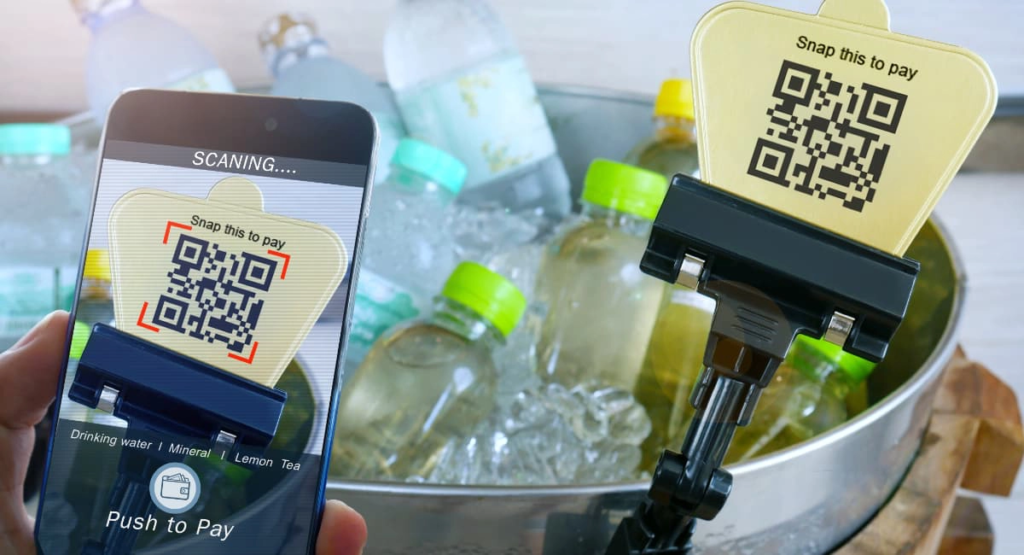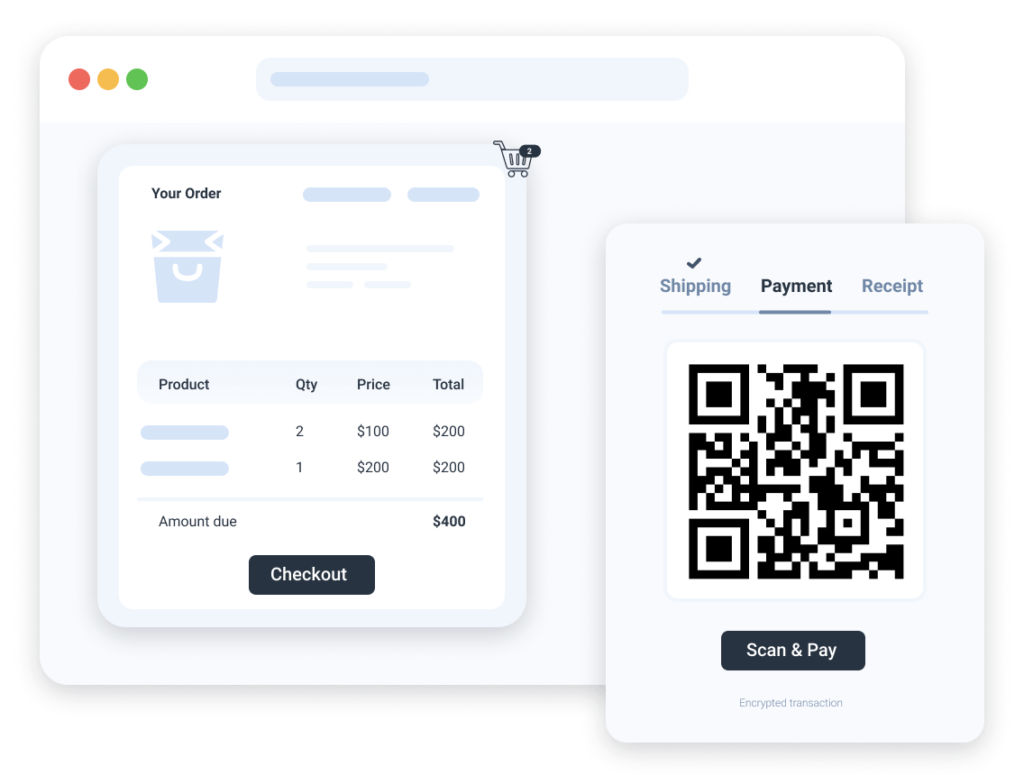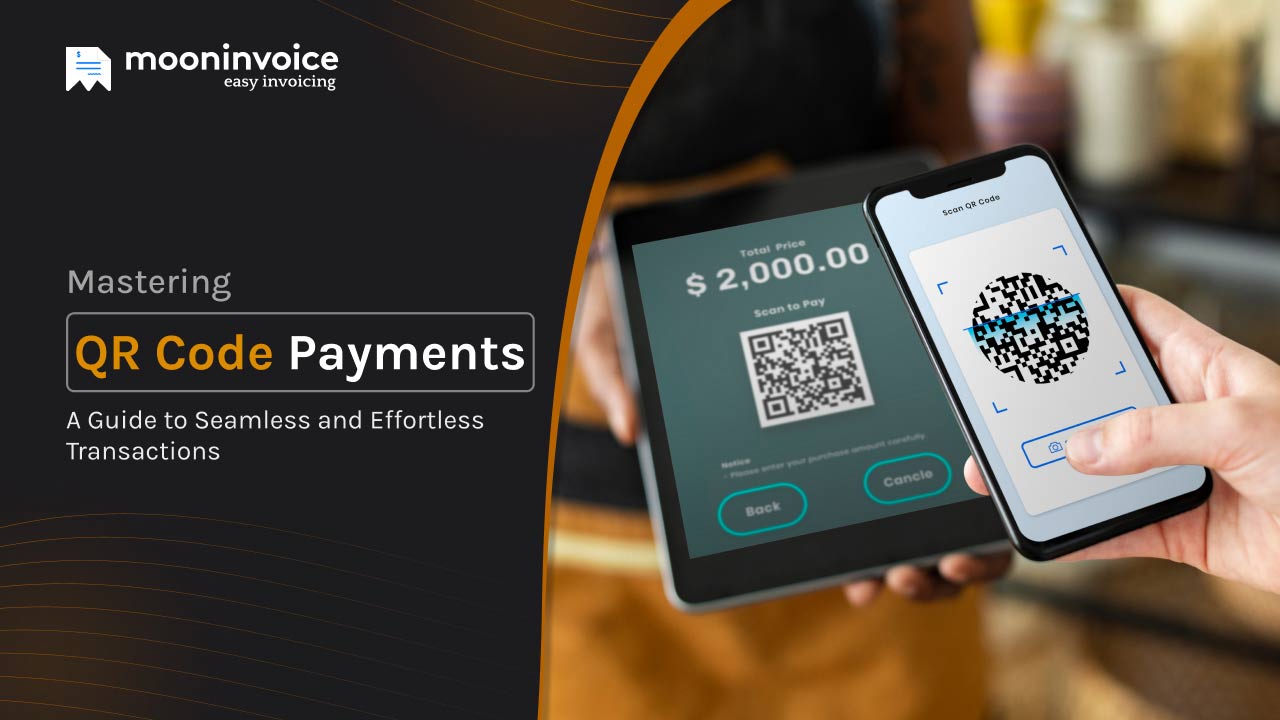In today’s fast-paced world, technology has revolutionized the way we make payments. Gone are the days of carrying cash or even credit cards, as mobile payment apps have become increasingly popular. One such app that has gained significant traction in recent years is the QR code payment app. This innovative payment method allows users to make transactions by simply scanning a QR code with their smartphone. In this blog post, we will delve into the world of QR code payment apps, exploring how they work, their benefits, top apps in the market, security measures, and the future of this technology. We will also provide tips for choosing the right QR code payment app and address common issues that users may face. So, let’s get started!
How QR Code Payment Apps Work
QR code payment apps use a two-dimensional barcode known as a Quick Response (QR) code to facilitate transactions. These codes can be scanned by a smartphone camera, which then redirects the user to a payment page where they can complete the transaction. The process is simple and efficient, making it a popular choice among merchants and consumers alike.
Scanning the QR Code
To initiate a transaction using a QR code payment app, the user needs to scan the QR code displayed at the merchant’s point of sale. This can be done by opening the app and selecting the “scan” option. The camera will then open, and the user can scan the code displayed on the screen. Alternatively, some apps allow users to upload a photo of the QR code from their camera roll.
Completing the Transaction
Once the code is scanned, the user will be redirected to a payment page where they can enter the amount to be paid and select their preferred payment method. This could be through a linked bank account, credit or debit card, or even a digital wallet. Once the payment is confirmed, the transaction is complete, and the user will receive a notification on their app.
Confirmation and Receipt
After the transaction is completed, both the merchant and the customer will receive a confirmation of the payment. The merchant will also generate a receipt for the transaction, which can be printed or sent to the customer via email or text message. This makes it convenient for both parties to keep track of their transactions.
Benefits of Using a QR Code Payment App

QR code payment apps offer numerous benefits to both merchants and consumers. Let’s take a look at some of the advantages of using this payment method.
Convenience and Efficiency
One of the main reasons for the popularity of QR code payment apps is the convenience they offer. With just a few taps on their smartphone, users can complete transactions without the need for cash or cards. This eliminates the hassle of carrying physical wallets and searching for exact change. It also saves time as transactions can be completed quickly, making it an ideal option for busy individuals.
Cost-Effective for Merchants
For merchants, QR code payment apps are a cost-effective solution compared to traditional payment methods. They eliminate the need for expensive card readers or point-of-sale systems, reducing overhead costs. Additionally, these apps often have lower transaction fees, making it a more affordable option for small businesses.
Increased Security
QR code payment apps use advanced encryption technology to secure transactions, making them a safer option than carrying cash or cards. The risk of theft or fraud is significantly reduced as the user’s personal and financial information is not shared with the merchant. Furthermore, many apps require biometric authentication, such as fingerprint or facial recognition, to authorize transactions, adding an extra layer of security.
Top QR Code Payment Apps in the Market

With the increasing popularity of QR code payment apps, there are now numerous options available in the market. Here are some of the top apps that have gained widespread recognition.
Alipay
Alipay is a Chinese mobile payment app that has over 1 billion users worldwide. It offers a wide range of services, including QR code payments, online shopping, and even investments. Alipay uses advanced security measures such as facial recognition and fingerprint authentication to ensure secure transactions.
WeChat Pay
WeChat Pay is another popular Chinese mobile payment app with over 900 million active users. It allows users to make payments by scanning QR codes or using the “Quick Pay” feature, which enables users to pay by simply showing their unique QR code to the merchant. WeChat Pay also offers additional features such as money transfers, bill payments, and in-app purchases.
PayPal
PayPal is a well-known digital payment platform that has recently introduced QR code payments. Users can link their bank accounts, credit or debit cards, and digital wallets to their PayPal account and make payments by scanning QR codes. PayPal also offers buyer protection, making it a secure option for online transactions.
Venmo
Venmo is a popular peer-to-peer payment app that allows users to make payments to friends and family. It also offers QR code payments for merchants, making it a convenient option for small businesses. Venmo also has social features, allowing users to share their transactions and split bills with friends.
Security Measures in QR Code Payment Apps
While QR code payment apps offer convenience and efficiency, there are concerns about the security of these transactions. However, these apps use various security measures to protect user information and prevent fraud.
Encryption Technology
QR code payment apps use advanced encryption technology to secure transactions. This involves encoding the user’s personal and financial information into a unique QR code that can only be decrypted by the app. This ensures that the information cannot be intercepted or altered during the transaction process.
Biometric Authentication
Many QR code payment apps now require biometric authentication, such as fingerprint or facial recognition, to authorize transactions. This adds an extra layer of security, as only the authorized user can complete the transaction.
Two-Factor Authentication
Some apps also offer two-factor authentication, where users receive a one-time code via email or text message to confirm their identity before completing a transaction. This prevents unauthorized access to the app and ensures that only the user can initiate transactions.
Future of QR Code Payment Apps
The future looks bright for QR code payment apps as they continue to gain popularity and evolve with new technology. With the rise of contactless payments due to the COVID-19 pandemic, QR code payments have become even more relevant. Additionally, advancements in augmented reality and virtual reality could potentially enhance the user experience of these apps.
Moreover, QR code payment apps are expected to expand into other areas such as public transportation, vending machines, and even parking meters. This will further increase their convenience and make them a more widely accepted payment method.
How to Set Up a QR Code Payment App

Setting up a QR code payment app is a simple process that can be completed in a few easy steps.
- Download the App: The first step is to download the app from the App Store or Google Play Store, depending on your device.
- Create an Account: Once the app is downloaded, you will need to create an account by providing your personal and financial information. Some apps may also require you to link your bank account or credit/debit card.
- Link Your Bank Account: If required, you will need to link your bank account to the app. This will allow you to transfer funds to and from your account for transactions.
- Add Funds: You can add funds to your app through various methods, such as bank transfers, credit/debit cards, or digital wallets.
- Start Making Payments: Once your account is set up and funded, you can start making payments by scanning QR codes at participating merchants.
QR Code Payment Apps vs Traditional Payment Methods
QR code payment apps offer several advantages over traditional payment methods such as cash and credit/debit cards. Let’s take a look at how they compare.
Convenience
QR code payment apps are more convenient than traditional payment methods as they eliminate the need to carry physical wallets or cards. Transactions can be completed quickly and easily with just a few taps on a smartphone.
Security
While both traditional payment methods and QR code payment apps have security measures in place, the latter offers more advanced encryption technology and biometric authentication, making it a safer option.
Cost-Effective
QR code payment apps are often more cost-effective for merchants compared to traditional payment methods. They eliminate the need for expensive card readers and have lower transaction fees, making them a more affordable option for small businesses.
Accessibility
QR code payment apps are accessible to anyone with a smartphone, making them a more inclusive payment method. This is especially beneficial for individuals who may not have access to traditional banking services.
Common Issues with QR Code Payment Apps
While QR code payment apps offer numerous benefits, there are some common issues that users may face. Here are a few of them and how to address them.
Compatibility Issues
Some QR code payment apps may not be compatible with all devices, which could limit their usage. It is essential to check the compatibility of the app with your device before downloading it.
Network Connectivity
QR code payment apps require an internet connection to function, which could be an issue in areas with poor network coverage. In such cases, users may not be able to complete transactions.
User Error
As with any technology, user error can also cause issues with QR code payment apps. For example, if the user does not scan the code correctly, the transaction may fail. To avoid this, it is crucial to follow the instructions provided by the app carefully.
Tips for Choosing the Right QR Code Payment App
With the increasing number of QR code payment apps in the market, it can be challenging to choose the right one. Here are a few tips to help you make an informed decision.
- Research: It is essential to research different apps and compare their features, security measures, and transaction fees before making a decision.
- User Reviews: Reading user reviews can provide valuable insights into the app’s performance and any issues that users may have faced.
- Security Measures: Look for apps that offer advanced encryption technology and biometric authentication for secure transactions.
- Compatibility: Ensure that the app is compatible with your device to avoid any issues.
- Additional Features: Some apps offer additional features such as rewards programs or budgeting tools, which could be beneficial for users.
Conclusion
QR code payment apps have revolutionized the way we make payments, offering convenience, efficiency, and increased security. With the rise of contactless payments and advancements in technology, these apps are expected to become even more popular in the future. However, it is essential to choose the right app and be aware of any potential issues to ensure a smooth and secure payment experience. So, whether you’re a merchant looking for a cost-effective payment solution or a consumer looking for a convenient way to make transactions, consider giving QR code payment apps a try.

